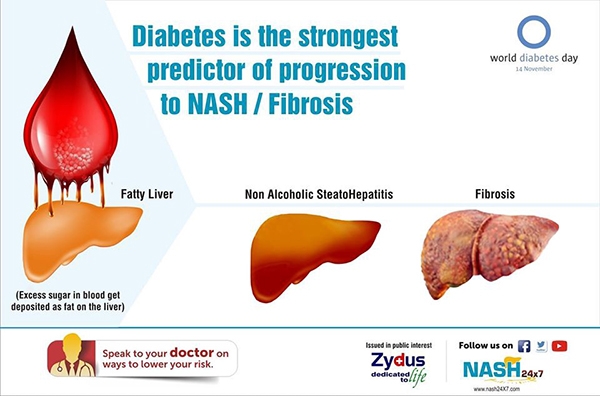Type 2 diabetes linked to NAFLD
Can type 2 diabetes occur to anyone? At what point can someone get type2 diabetes? And how is it related to NAFLD? Let’s learn about what type 2 diabetes is and how are diabetic patients are at a risk of NAFLD.
Non-alcoholic fatty liver disease and diabetes mostly exist together. While obesity and insulin resistance are linked with NAFLD, the ailment has its prevalence among 70% of the type 2 diabetic patients. The disease occurs when fat accumulates in the liver more than 10% to 5% of the liver’s weight. It can happen to people who either do or do not drink alcohol. Non-alcoholic fatty liver disease and diabetes are strongly linked.
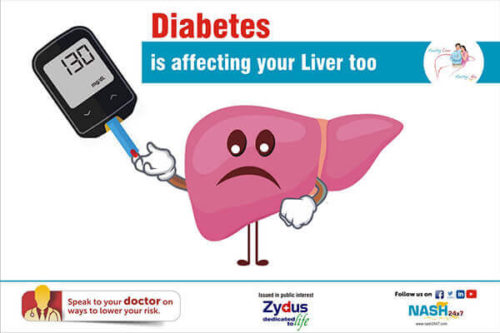
What is non-alcoholic fatty liver disease?
“NAFLD is defined as hepatic steatosis diagnosed either by histology/imaging with macrovesicular steatosis in >5% of hepatocytes according to histological analysis or by proton density fat fraction or >5.6% as assessed by proton magnetic resonance spectroscopy (MRS) or quantitative fat/water selective magnetic resonance imaging (MRI) with no secondary cause for steatosis”
Non-alcoholic fatty liver disease refers to the umbrella term that consists of ailments of the liver. As the name goes, NAFLD refers to fatty liver resulting from alcohol consumption or obesity. Many more factors contribute to the development of the liver fat. Non-alcoholic steatohepatitis (NASH) can happen at a later stage of NAFLD, whose characteristics are inflammation in the liver and liver scaring and in worst cases, cirrhosis and liver cancer.
We can identify the disease with some symptoms –
· Fatigue
· Chronic pain in the abdominal area
· Enlarged spleen
· Red palms
· Yellowing of the skin and eyes
Although it is commonly said that fatty liver occurs due to alcohol consumption, the surprising fact is that there are more to the disease than we can think. Among the factors which lead to the development of fatty liver disease are — obesity, insulin resistance, improper food habits, high blood sugar (hyperglycemia) indicating type 2 diabetes and also high level of fat in the blood.
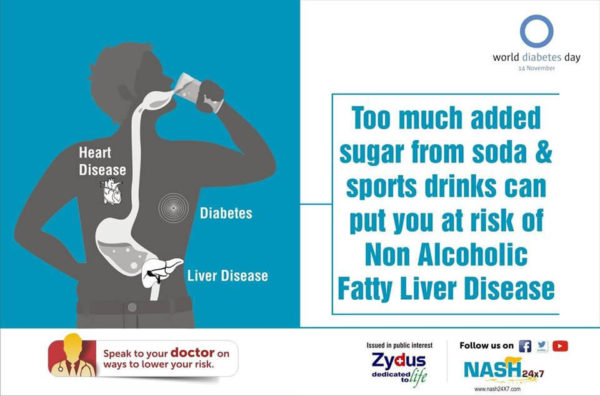
– Indian J Endocrinol Metab. 2018 May-Jun; 22(3): 421–428.
source: https://www.ncbi.nlm.nih.gov/pmc/articles/PMC6063173/#ref9
Although, NAFLD can get to a stage where it is difficult to control, we can take up some preventions that will dodge the effect by maximum amount. As one of the main factors of fatty liver is obesity, one can shift their unhealthy diet to a healthy one. Consuming fruits and veggies and avoiding fat packed food items can really help combat Non-alcoholic fatty liver disease. Obesity being the major factor contributing to the disease, one can invest time in exercising. Daily workout can immensely help in eroding the fat in liver and prevent fatty liver or NAFLD to occur.
Let’s talk about type 2 diabetes: how our body resists the effect of insulin and its consequences
Our body metabolizes the sugar (glucose), which fuels our system. The onset of type 2 diabetes starts, when our body can’t resist the effects of insulin or doesn’t produce enough insulin to regulate the level of glucose in the body.
It is unknown why type 2 diabetes occur, but it is said that inactivity, obesity and genetics and other environmental factors add to the occurrence of the disease. At a later stage, patients are given diabetes medication and insulin therapy.
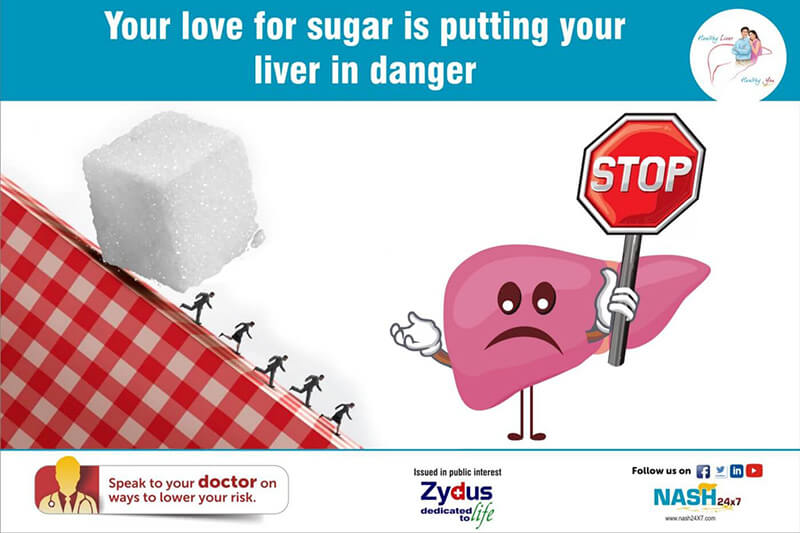
Symptoms of type 2 diabetes
As we all know, diabetes is a terrible disease and it comes with physical hardships. Although there are tests to find out whether one is diabetic, certain initial symptoms might be a trail to find out whether it’s diabetes.
If you are suffering from –
· Frequent urination
· Fatigue
· Blurred vision
· Increased hunger
· Frequent infections
· Skin darkening and patchy coloured skin
· Weight loss
You might have to visit the doctor and find out whether you have diabetic symptoms.
Occurrence of diabetes — how the effects of insulin leads to the disease
The hormone that is secreted by pancreas in called insulin. The insulin, then, blends with the bloodstream to maintain the level of sugar in the body. When the body becomes resistant to the effects of insulin or the pancreas is unable to produce enough insulin, type 2 diabetes comes into the picture. With the occurrence of the disease, many other aliments come to action. Diabetes patients are at high risk of serious NAFLD and in worst cases, NAFLD leads to NASH in diabetes. Let’s look into the core of the disease and its prevention methods.
Source : https://www.mayoclinic.org/diseases-conditions/type-2-diabetes/symptoms-causes/syc-20351193
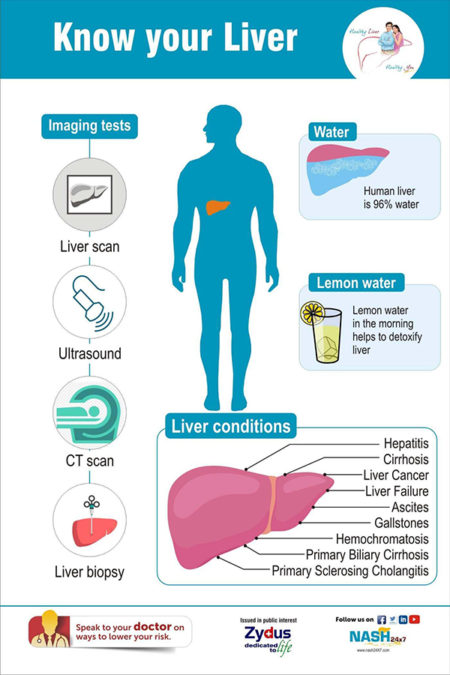
How NAFLD can occur along with diabetes? How can be find out if one has NASH in diabetes
NAFLD (non-alcoholic fatty liver disease) and diabetes can co-exist. With the onset of diabetes in patients, the risk of NAFLD and NASH also becomes evident.
“Type 2 diabetes mellitus (T2DM) and nonalcoholic fatty liver disease (NAFLD) is known to commonly exist together. It has been said as a manifestation of the metabolic syndrome. The presentations of NAFLD range from simple steatosis (NAFL), nonalcoholic steatohepatitis (NASH), and cirrhosis. NAFLD is found in 70% of the T2DM patients. Overweight/obesity and insulin resistance (IR) are strictly linked with NAFLD. Noninvasive assessment and staging of disease are based on clinical parameters such as age, sex, liver function test, platelet count, lipid profile, BMI, and imaging modalities such as USG, transient elastography (TE), and magnetic resonance imaging mass spectroscopy. Such clinical scoring systems and TE are useful in the early detection of NAFLD and predicting fibrosis.”
NAFLD is also said to increase the level of microvascular complications of diabetes which are chronic kidney disease and retinopathy.
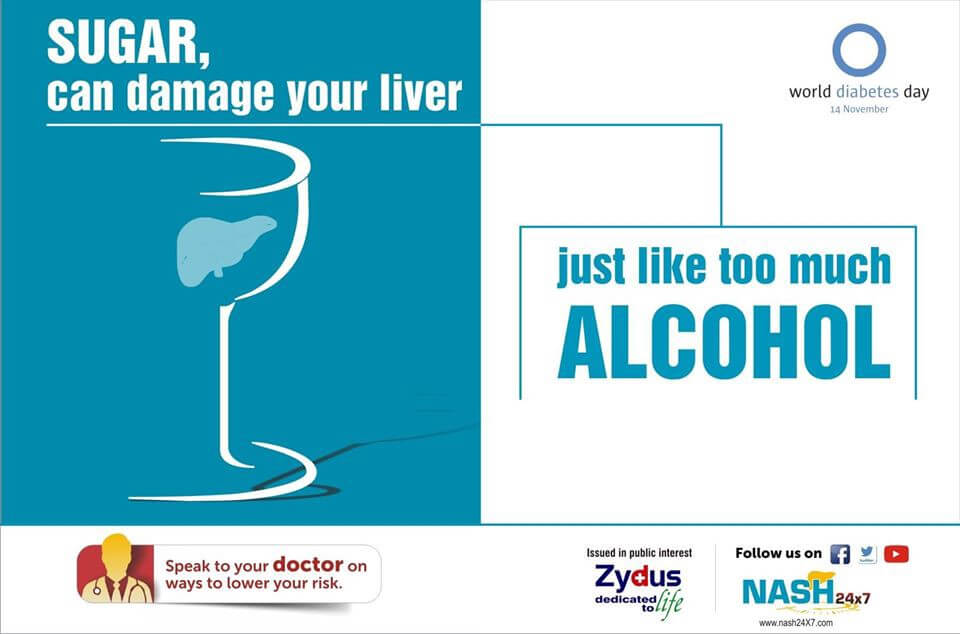
Indian J Endocrinol Metab. 2018 May-Jun; 22(3): 421–428.
source: https://www.ncbi.nlm.nih.gov/pmc/articles/PMC6063173/#ref9
“Patients with diabetes or prediabetes had accelerated fibrosis when their serial biopsies were studied and recorded.[2] It has also been found that the advanced forms of NAFLD i.e. NASH, advanced fibrosis, cirrhosis, and HCC occur mostly in these patients.[1] Those patients with worsening metabolic risk factors tend to have increased progression from NAFL to NASH and fibrosis.[20] A clinical model which predicted NASH and advanced fibrosis in NAFLD patients with T2DM was developed by Bazick et al. in 2015 which had a better accuracy than the NAFLD fibrosis score with a specificity of 90.0% and a sensitivity of 56.8%.”
– Indian J Endocrinol Metab. 2018 May-Jun; 22(3): 421–428.
source: https://www.ncbi.nlm.nih.gov/pmc/articles/PMC6063173/#ref9
How to diagnose NAFLD in diabetes and its preventive measures
During the diagnosis of NAFLD, there shouldn’t be ongoing habit of alcohol consumption, no practice of taking steatogenic medications and other causes of liver disease such as hepatitis.
To diagnose NAFLD one can go for the following options-
· Liver biopsy
· NAFLD patients having increased risk of having steatohepatitis and advanced fibrosis
· competing etiologies for hepatic steatosis and coexisting chronic liver diseases can be included
Preventive measures for NAFLD in diabetes
As overweight and unhealthy diet habits contribute to the causes of diabetes and NAFLD and NASH, one is recommended to switch to a healthier lifestyle. It is recommended that 500–1000 kcal deficit per day is required to lose weight OF 500–1000G per week. A diet with high protein and carbohydrate and low fat is recommended. Sugar (fructose) containing drinks are a total red flag in this condition. Alcohol consumption should be put to a halt during NAFLD. Due to the deposit of fat in the liver, exercises such as walking, cycling etc. can reduce the risk of NAFLD in diabetes.
In a gist, type 2 diabetes can be dangerous and with it can come non-alcoholic fatty liver disease which can be worsen to NASH. So, it is easier to maintain a healthy lifestyle than to cope with the effects of type 2 diabetes in NAFLD. Switch to proper and habits to avoid falling in the hands of NAFLD and diabetes. Promoting a healthy liver is promoting a healthy life.
